Will Lloyd’s article in Spectator, “Spotify and the Death of Discovery,” got me teething on the problem of dwindling engagement between artists and streaming music listeners. In my opinion, a chief contributor to this unfortunate decline is obvious, and has been for ten years now: In short, where are the liner notes?!
For those too young or too busy to appreciate the value of liner notes, indulge me in a flashback. It won’t hurt. I promise:
A Not-So-Brief History of Music Discovery
In my pre-teens (ca. 1975), music discovery came as a stack of borrowed records. I would sit in the living room with an oversized pair of headphones and exit reality for the music, the album artwork, and the liner notes. “What’s a Producer? A mix engineer? Golly, that must be cool.” It was a powerful experience. While I might not remember what I had for lunch yesterday, I can still remember the names of Elton John’s original band members, and that glorious, double-gatefold sleeve for Goodbye Yellow Brick Road. Damn.
When the 80s arrived (with a driver’s license), radio became my preferred source for music discovery. In Washington, D.C., the station for alternative music – back then, “alternative” meant anything outside of the mainstream – was 99.1 WHFS, broadcasting on a painfully weak signal out of Baltimore, Maryland. But, static be damned, if you were an ‘HFS fan, you were a rabid fan – it was a lifestyle choice and a matter of pride. My buddy, Dan, had ‘HFS programmed into every button of his mom’s colossal Caddy. If you didn’t like it, you rode with somebody else.
Side story: One day, Dan locked the brakes on that Caddy without warning. “What the f**k?” I yelled, spilling my Big Gulp as he threw ‘er into reverse and up onto the sidewalk. Curse me for not noticing, but one of our suburban Springfield neighbors had put no less than thirty bags of raked leaves on the curb – all in a perfect row. Vroom! The Caddy plowed over ’em like a speed boat through choppy water. And, just to be sure there were no survivors, Dan plowed through ’em two more times – first backwards, then forwards. Leaves everywhere. Shredded Hefty bags clinging to the bumpers for dear life. I laughed so hard I couldn’t breathe for two minutes. Dan Ames. What a glorious idiot.
I also remember the names of my favorite ‘HFS DJs – Sue, Weasel, and Milo. In the muggy, unhip environment that was The Beltway, they were heroes of an invisible counterculture. Theirs was the only station playing music by New Order, The The, and Human League, and a decade later, Echo & The Bunnymen, Electronic, and the Pixies. And then there was the hilarious mock news program, “The Daily Feed,” radio’s answer to The Onion.
Other sources of music discovery came from television. Don Kirshner’s Rock Concert, The Kenny Everett Video Show, and Saturday Night Live were wildly popular among young night owls. Later, in my college years, there was Night Flight and the ubiquitous MTV. These brought Devo, Gary Numan, The Specials, and so many others into my living room and, ultimately, my record collection.
If your lust for new music was obsessive, you could get a job at a record store – two of my buds, Tony Peltier and Harold Stusnick, worked at Kemp Mill Records – or you could purchase Debut, a monthly UK music magazine with bundled LP. Debut featured pages of interviews and back stories for each of the artists featured on the monthly LP. It was music discovery on overdrive, albeit with a hefty price tag. A decade later, CMJ’s New Music Monthly would follow a similar format. Debut introduced me to The Smiths, Colourbox, and Prefab Sprout, to name a few.
Finally – I realize you’re getting tired by now – there was hands-on music discovery. No less than once per month, a few of us would run the gauntlet, trolling the import bins at record stores in Georgetown and Old Town, Alexandria, purchasing records with nothing to go on but the cover art and liner notes. [Anything by Sire Records or Mute Records was usually a good gamble in the 80s.] Kemp Mill. Penguin Feather. Waxie Maxie’s. Smash! Records. Olsson’s. [Yeah, they’re all gone now.] At college, the complete weekend included a trek to Eide’s in Pittsburgh, where dark wave and post-punk music by Fad Gadget and Joy Division first challenged my youthful idealism.
And then – last one, I promise! – there were the weekend record conventions, where $40 could bring home a sizeable stack of vinyl. These popped up sporadically in high school gymnasiums and community centers around suburban Virginia and Maryland, and typically required a protracted road trip (and this thing we called “map”). Here, you could expect to find rarities unstocked by traditional record stores. Singles (with otherwise unreleased B-sides). Radio promos (likewise). Most of my Depeche Mode singles were acquired at record conventions, including some limited-edition gems I cherish to this day. [Note that such scarcity (or artificial scarcity, as the case may be) of physical music formats and the obsession it stirred in uber-fans like ourselves will likely never be seen again – not in the streaming universe, anyways. Call me an obsessive, capitalistic pig, if you like, but I enjoyed those adventures in record collecting, picking through the endless aisles of repurposed milk carton crates and haggling with sellers for volume discounts. These were fun times in an otherwise unspectacular youth.]
Where Have All the People Gone?
This history lesson speaks not just of music discovery, but of fan engagement. And that is exactly what’s missing from Spotify. Playlists offer access to more music than radio ever did but without building any lasting connections between artists and listeners. Gone are the interstitials – the DJ commentaries (for better and worse) that piqued our interest in a track or artist. And when the service replaces liner notes with a “Skip” button, it not only prevents listeners from further connecting with an artist, it proactively dissuades it. “Never mind that this album was produced by an industry icon, and that the artist donated $100,000 to an African elephant sanctuary, and that the bass player has an electrical engineering degree and builds his own amps. Screw all that. It’s not important. Get outta here, punk.”
To be fair, this contradicts my historical criticisms of traditional music industry gatekeepers. In the pre-Internet years, independent artists had limited opportunities to market and distribute their music. But those gatekeepers – in this case, radio program directors and DJs – provided a valuable service, I’ll admit, sorting through the endless music releases and sharing only the ‘good stuff.’ [Well, mostly.] Casual listeners relied on those tastemakers (and still do) for music discovery, humor, and relevant news.
As I write, Spotify is investing heavily in podcasts. But, licensing and monetization of music for podcasts is complicated and will prohibit radio-like music programs for a while. [A better solution, in my humble opinion, would be to amalgamate podcasts and playlists, whereby a host’s dialogue occupies an independent, overdubbed audio track (monetized or not) that plays over streamed tracks that register per-stream plays (and payouts) in the traditional manner, sorta like the optional director’s commentary on a DVD. Call it “multi-channel streaming,” if you will.] But I’m going off-topic (again, sorry).

Liner notes, on the other hand, are a no-brainer. Give listener’s easy access to liner notes and any other info artists might want to share while the music is playing – song lyrics, personal stories, behind-the-scenes / documentary stories, etc. – and watch listeners engage. And when they realize that liner notes and artwork, like a good coffee-table book, create an enjoyable experience, they’ll come back for more. “Where can I find more artists like this?” Engagement begets music discovery. Begets engagement.
Ideally, the relevant metadata would be relational (searchable), permitting fans to ask questions, like, “What other artists did this producer work with?” and “Was this guitarist in any other bands?” But let us not be greedy. For now, some static text and images would be fine.
What’s the hold-up? There are no technical limitations I can imagine. The storage and bandwidth required to supply liner notes and high-resolution cover artwork are minimal when you consider the size of the audio files Spotify (and, to be fair, other streaming music outlets) push out every second. So, by now, the absence of liner notes is just weird. It’s killing fan engagement for at least one generation of music listeners. And counting….
Spotify (etc.), please fix this.
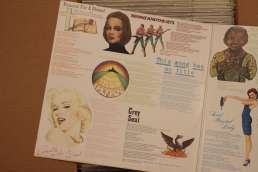

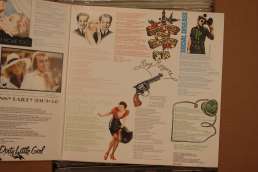
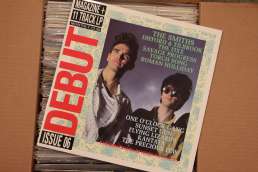
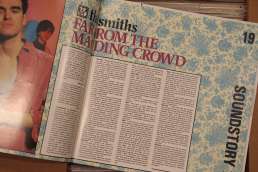
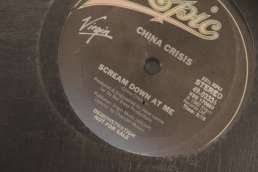

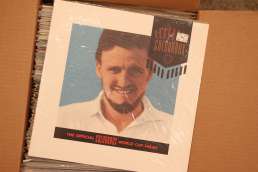

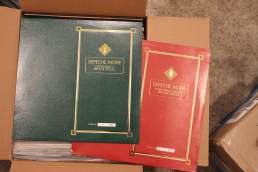
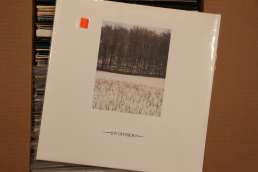
David enjoyed this. Spotify has been adding context through Genius integrations and a Story feature enabling the artist the chance to add written notes on the songs. That’s much more Spotify than liner notes. The artists POV is great but I want to know more about what other fans think. We’re very much intending to open up https://www.songsommelier.com/ to expert and passionate, knowlegeable curators (preferably who can write well also) to tell there own stories through playlists, artwork (original artwork too) and sleevenotes along with much else. Check it out there is plenty to listen to and look at and read!
Thank you, Keith. Yeah, Spotify’s new Storylines feature looks promising – especially if artists/labels will be able to control their own content. By contrast, while I understand concerns re quality control, I’m not a huge fan of the Behind the Lyrics / Genius setup, whereby artists must meet a plays threshold before their custom content will appear on Spotify.
Ideally, Storylines would support links. Spotify could offer their own simplified tag syntax for security and to keep everyone in the sandbox while facilitating artist-supplied references to specific tracks, albums, artists, (other Storyline content?), etc.
Fan-generated content? That’s an interesting perspective. I enjoyed Fenner Pearson’s tribute to Talk Talk & Mark Hollis on Song Sommelier very much. Yeah, I’d like to see content like this on Spotify.
Thanks again!